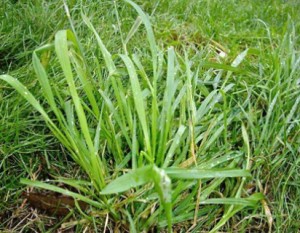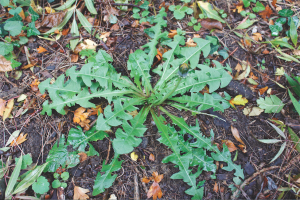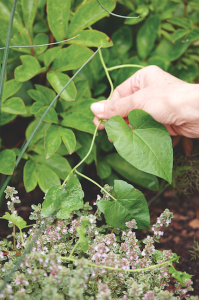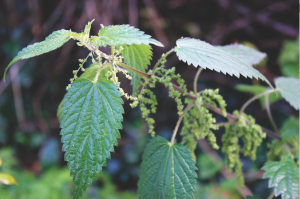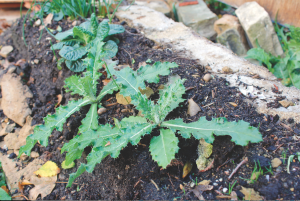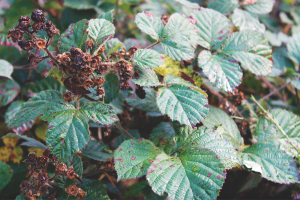Some gardeners say there’s no such thing as a weed, and that they’re only plants in the wrong place. But anyone with a garden knows that dandelions and bindweed are always in the wrong place, and if left unchecked, they will march all over your prized plants like an indomitable army.
Weeds are, in fact, highly successful plants that reproduce themselves very efficiently by seed or through a network of underground roots or stems, or both. When planting a new bed or border, it pays to remove all the weeds at the outset – they will still appear again in time, but the problem will be much reduced.
If weeds are ruining the look of your garden, follow these tips from Squire’s to keep these pesky plants at bay.
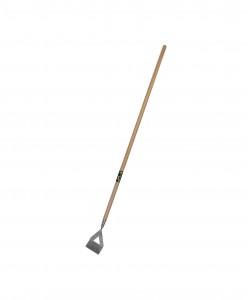
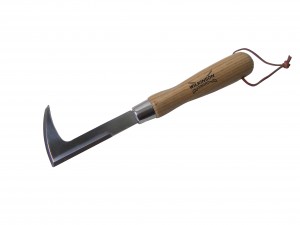
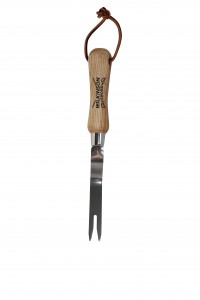 Dutch Hoe, Hand Patio Knife & Daisy Grubber – all available at Squire’s Garden Centres
Dutch Hoe, Hand Patio Knife & Daisy Grubber – all available at Squire’s Garden Centres
Dealing with annual weeds
Annual weeds, which grow each year from seed, can be removed with a Dutch hoe. Ensure yours has a sharp blade, and on a dry day, push the blade to and fro just beneath the soil surface, severing the weed stems from their roots. Special tools, such as a Hand Patio Knife, are available for prising weeds from cracks in paving, or keep them at bay by pouring boiling water over seedlings at they appear.
Attacking pernicious weeds
More pernicious weeds, including couch grass, dandelions, nettles, bindweed and brambles, can also be removed by hand. Use a towel, spade or special weeding tool like a daisy grubber, to dig out the whole plant, including all of the root system, since many weeds can regrow from even a tiny piece of root. Cutting down pernicious weeds to the ground every week or so also reduces their impact and may kill them in the long run if you persevere. Or try a dose or two of Weedkiller on those that are difficult to control by hand. Paint Roundup Weedkiller Gel onto the leaves of weeds growing in beds, where spraying a chemical may also kill your prized plants.
The big cover-up
Another simple way to minimise weed growth is to cover bare soil with weed-suppressing fabric. This blocks out the light needed for weeds to grow, but allows water to filter through to your ornamental plants. Lay the fabric over a bed, and cut crosses into it where you want to plant. Peel back the fabric, plant your flowers, then tuck the fabric flaps around the plant’s stems. Disguise the fabric with a decorative layer or bark or gravel. You can also pack your beds with the plants you love. Their dense leaves will deprive weed seeds of the light they need to germinate.
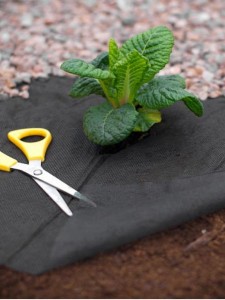 Weed-suppressing fabric – available at Squire’s Garden Centres
Weed-suppressing fabric – available at Squire’s Garden Centres
Common problem weeds and how to tackle them
1. Couch Grass – Dig out this perennial evergreen weed as soon as you see it, removing all the roots. Or try one or two applications of Roundup Weedkiller.
2. Dandelion – Dig out before they flower and try to remove the long tap root to prevent regrowth. Roundup Gel is a good solution for dandelions growing in beds.
3. Bindweed – Almost impossible to eliminate completely; apply a Weedkiller, such as Roundup or Resolva, or pull it out as soon as you see it, taking care not to leave any roots.
4. Nettles – These spread rapidly so dig them out as soon the young shoots appear. Or try one or two applications of Roundup or Resolva weedkiller.
5. Sow Thistle – The annual sow thistle is easy to pull out by hand or you can hoe off young seedlings. Weedkillers are generally not required to remove this weed.
6. Bramble – The deep roots make this woody weed difficult to dig out; apply a weedkiller, such as SBK Tough Weedkiller, to established plants.
7. Horsetail – Dig out this pernicious weed – including all the roots – as soon as you see it. Or apply a Weedkiller, such as Roundup Tree Stump & Root Killer Concentrate.
8. Hairy Bittercress – Keep an eye out for this annual weed and remove it by hand before it flowers and sets seed. Weedol 2 is an effective chemical control.
9. Japanese Knotweed – If you see Japanese Knotweed, follow the Environment Agency’s (www.environment-agency.gov.uk) advice on the best way to remove it. It can grow through concrete and paving, so take action as soon as you see it.
10. Ground Elder – Using a chemical such a as Roundup Tree Stump & Root Killer is often the only way to remove this invasive weed. Attempting to dig it out can make it worse.
Squire’s Garden Centres stock everything you need to get rid of weeds – including tools, weedkiller and weed-suppressing fabric. Visit www.squiresgardencentres.co.uk for your nearest centre.


